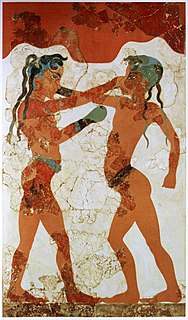
Martial arts are codified systems and traditions of combat practiced for a number of reasons such as self-defense, military and law enforcement applications, physical, mental and spiritual development; as well as entertainment and the preservation of a nation's intangible cultural heritage.
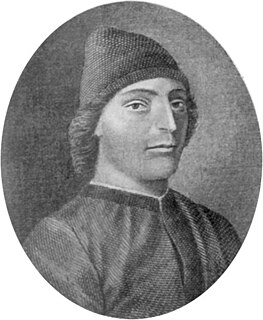
Guarino Veronese or Guarino da Verona was an early figure in the Italian Renaissance.
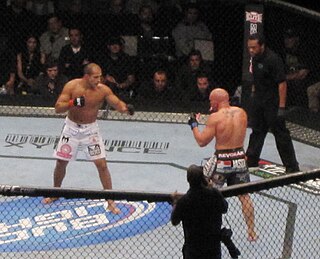
Mixed martial arts (MMA) is a full-contact combat sport that allows striking and grappling, both standing and on the ground, using techniques from various combat sports and martial arts. The first documented use of the term mixed martial arts was in a review of UFC 1 by television critic Howard Rosenberg in 1993. The term gained popularity when newfullcontact.com, then one of the largest websites covering the sport, hosted and republished the article. The question of who actually coined the term is subject to debate.
Chinese martial arts, often named under the umbrella terms kung fu and wushu, are the several hundred fighting styles that have developed over the centuries in China. These fighting styles are often classified according to common traits, identified as "families", "sects" or "schools" of martial arts. Examples of such traits include Shaolinquan (少林拳) physical exercises involving Five Animals (五形) mimicry, or training methods inspired by Old Chinese philosophies, religions and legends. Styles that focus on qi manipulation are called internal, while others that concentrate on improving muscle and cardiovascular fitness are called "external". Geographical association, as in northern and "southern", is another popular classification method.

Wrestling is a combat sport involving grappling-type techniques such as clinch fighting, throws and takedowns, joint locks, pins and other grappling holds. The sport can either be theatrical for entertainment, or genuinely competitive. A wrestling bout is a physical competition, between two competitors or sparring partners, who attempt to gain and maintain a superior position. There are a wide range of styles with varying rules with both traditional historic and modern styles. Wrestling techniques have been incorporated into other martial arts as well as military hand-to-hand combat systems.

A rikishi (力士) sumotori or, more colloquially, sumosan, is a professional sumo wrestler. Rikishi are expected to live according to centuries-old rules and, although there are some exceptions, most come from Japan, where sumo is practiced exclusively. Participation in official tournaments is the only means of marking achievement in sumo and the rank of an individual rikishi is based solely on official wins.

Sambo is a Russian martial art and combat sport. It originated in the Russian SFSR in Soviet Union. The word "SAMBO" is a portmanteau for samozashchita bez oruzhiya, which literally translates as "self-defence without weapons". Sambo is relatively modern, since its development began in the early 1920s by the Soviet Red Army to improve their hand-to-hand combat abilities. It was intended to be a merger of the most effective techniques of other martial arts.
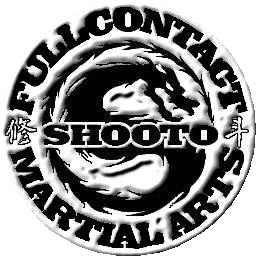
Shooto is a combat sport and mixed martial arts organization that is governed by the Shooto Association and the International Shooto Commission. Shooto was originally formed in 1985, as an organization and as a particular fighting system derived from shoot wrestling. Practitioners are referred to as shooters, similarly to practitioners of shoot wrestling. Shooto rules have evolved such that their events are now true mixed martial arts competitions.
Shoot wrestling is a combat sport that has its origins in Japan's professional wrestling circuit of the 1970s. Professional wrestlers of that era attempted to use more realistic or even "full contact" moves in their matches to increase their excitement. The name "shoot wrestling" comes from the professional wrestling term "shoot", which refers to any unscripted occurrence within a scripted wrestling event. Prior to the emergence of the current sport of shoot wrestling, the term was commonly used in the professional wrestling business, particularly in the United Kingdom, as a synonym for the sport of catch wrestling. Shoot wrestling can be used to describe a range of hybrid fighting systems such as shootfighting, shoot boxing and the styles of mixed martial arts done in the Shooto, Pancrase and RINGS promotions.

Bartitsu is an eclectic martial art and self-defence method originally developed in England during the years 1898–1902, combining elements of boxing, jujitsu, cane fighting, and French kickboxing (savate). In 1903, it was immortalised by Sir Arthur Conan Doyle, author of the Sherlock Holmes mystery stories. Although dormant throughout most of the 20th century, Bartitsu has been experiencing a revival since 2002.
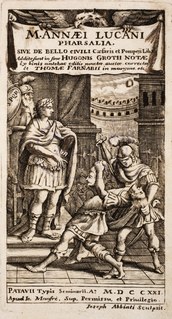
Thomas Farnaby was an English schoolmaster and scholar.

An abolla was a cloak-like garment worn by ancient Greeks and Romans. Nonius Marcellus quotes a passage of Varro to show that it was a garment worn by soldiers, and thus opposed to the toga.
Hybrid martial arts, also known as hybrid fighting systems or sometimes eclectic martial arts or freestyle fighting, refer to martial arts or fighting systems that incorporate techniques and theories from several particular martial arts (eclecticism). While numerous martial arts borrow or adapt from other arts and to some extent could be considered hybrids, a hybrid martial art emphasizes its disparate origins.
Latin obscenity is the profane, indecent, or impolite vocabulary of Latin, and its uses. Words deemed obscene were described as obsc(a)ena, or improba. Documented obscenities occurred rarely in classical Latin literature, limited to certain types of writing such as epigrams, but they are commonly used in the graffiti written on the walls of Pompeii and Herculaneum.
A shikona is a sumo wrestler's ring name.
Evan is a Welsh masculine given name derived from "Iefan", a Welsh form for the name John. In other languages it could be compared to "Ivan", "Ian", and "Juan"; the name John itself is derived from the ancient Hebrew name יְהֹוחָנָן Yəhôḥānān, which means "Yahweh is gracious". Evan also comes from the Gaelic word "Eóghan" meaning "youth" or "young warrior" and Scots for "right-handed". In Hebrew, the actual non-proper noun, "evan/even/eban/eben", literally means "rock". It can also be the shortened version of the Greek name "Evangelos", or "Evander". The old English translation of the name "Evan" could also be interpreted as "Heir of the Earth" or "The King". The name is also occasionally given to females, as with actress Evan Rachel Wood. It may be encountered as a surname, but Evans is usual.
There are a number of traditional martial arts native to Ireland. The Irish language term for "martial arts" is ealaíona comhraic. Traditional styles include Dornálaíocht (boxing), Coraíocht (wrestling), Speachóireacht (kicking), and Batadóireacht.













